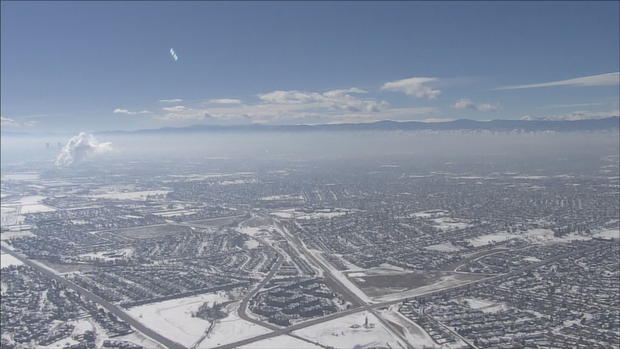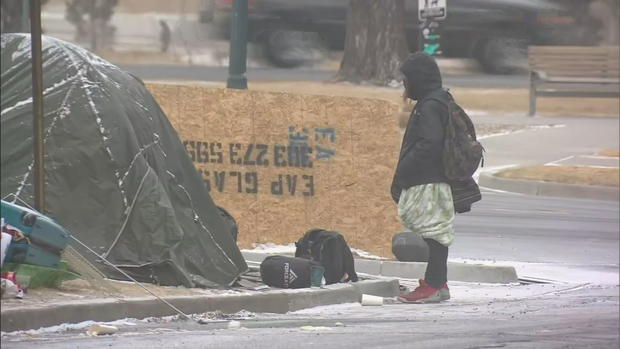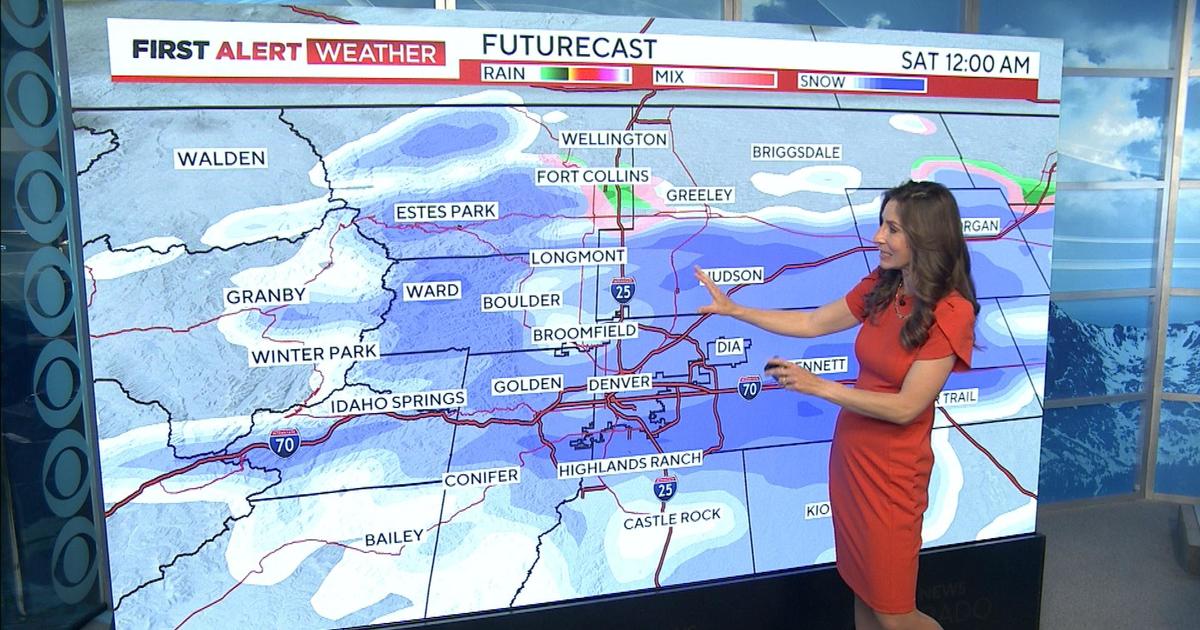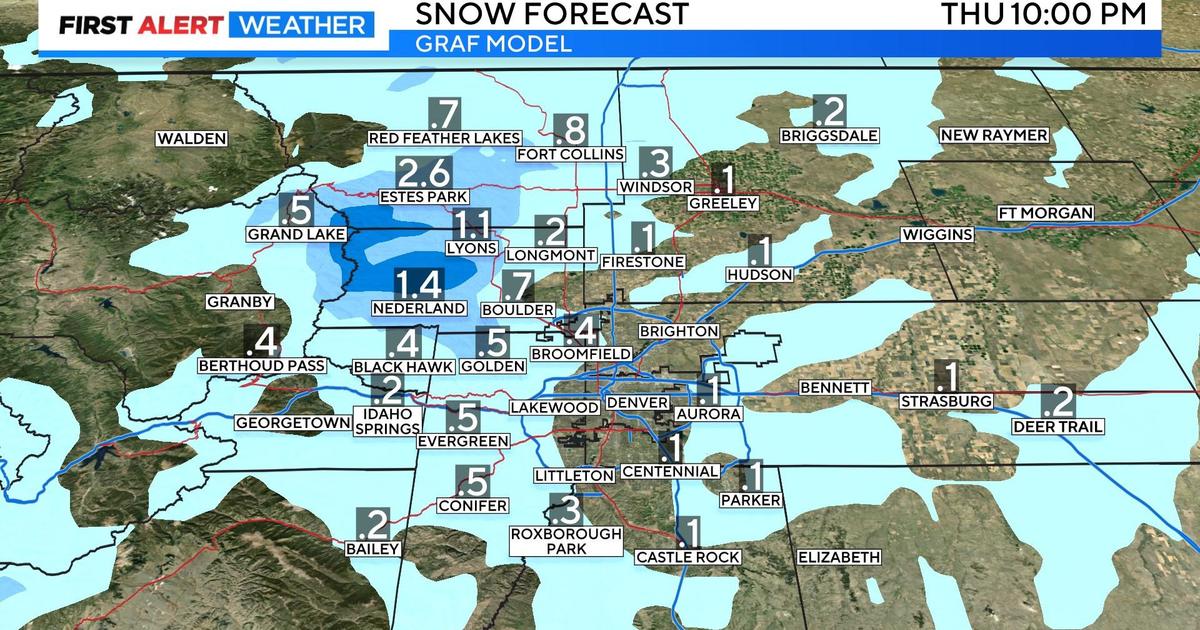Frostbite Injuries Soar After Freezing Weekend In Colorado
AURORA, Colo. (CBS4) – UCHealth is treating a record number of frostbite patients after temperatures dipped below zero over the weekend. As of Monday, there are 26 patients at the UCHealth Burn and Frostbite Center on the Anschutz Campus in Aurora, more than the hospital has ever had at one time.
"We aren't used to having that many days in a row of that cold of temperature, so I was worried about it. Then I started seeing all the numbers starting to roll in and I knew that my worst fears were going to come true. That's what's happened so far," said Dr. Anne Wagner, Medical Director of UCHealth Burn and Frostbite Center.
Wagner says it's important to see a doctor as soon as possible if frostbite is suspected. The longer someone waits, the higher the likelihood of amputation.
Alec Grimes was airlifted to UCHealth after a cold night in Fort Collins nearly cost him both his feet. His phone died, so he couldn't call a ride. He didn't think a few miles in Vans would land him in the hospital.
"There was snow on the ground, and it was very wet. My feet were frozen stuck to my shoe. I went to the hospital and then that's when I found out I had frostbite," said Grimes. "They started talking about possible amputation and at that point it became really scary."
Fortunately, Grimes walked out of UCHealth on two feet.
The parts of the body most commonly affected by frostbite are areas exposed to cold air, especially the fingers and hands, feet and toes, nose and ears.
Signs and symptoms of frostbite include:
- Shivering is the first sign the body is losing heat, so don't ignore it
- Numbness
- Pale color to the skin
- Clumsy movements
- Pain that persists for 45 minutes after rewarming
- Following rewarming, increased redness or discoloration
"It's a really deep, very strong, stinging, burning pain and nothing you do can make it better. What the patient will usually notice is their fingers get really white, they have trouble bending them and they can't really feel the tips," said Wagner.
It only takes 30 minutes for frostbite to set in when the temperature is 5 degrees and the wind speed is 30 mph. At -5 degrees and a wind speed of 30 mph, frostbite will happen in 10 minutes.
Wagner says the majority of frostbite patients are homeless.
After nearly losing his feet, Grimes began donating cold weather gear for people on the street.
In these temperatures, they can't afford another cold shoulder.
"That was one of the first things I thought about is all the people that are stuck in that, and they don't have shelter or a way to stay warm. It's definitely something I keep in mind each year and that's why I continue to do this year in and year out," said Grimes.
Despite the economic hardship many people are facing right now, Grimes says this has been one of his best winters for community donations.
Below is a list of organizations accepting donations for those in need. Due to COVID-19, all donors are asked to call in advance to confirm the location is still accepting items and learn of any guidelines/restrictions.
Clothes to Kids of Denver – (720) 379-4630
Comitas Crisis Center on the Anschutz Campus - (303) 341-9160
Denver Coalition for the Homeless - (303) 293-2217
Denver Rescue Mission – (303)294-0157
Haven of Hope - (303) 607-0855
Impact Humanity - (720) 629 -2619
Samaritan House – (303) 294-0241
To help prevent frostbite:
- Dress in layers and keep outerwear dry
- Choose loosely woven fabric for the inside layer (wool, silk, polypropylene). These fabrics hold more heat and help avoid excessive perspiration
- When outside in cold temperatures, take frequent breaks indoors and assess hands, feet, ears and nose
- Cover your head – wear a hat and earmuffs
- Wear heavy mittens instead of gloves. The collective body heat from the fingers being together keeps the hand warm
- Two pairs of thinner socks provide better insulation than a single pair of thicker socks
- Be prepared when traveling in cold weather. Keep a winter survival kit in the car that includes blankets, matches and extra clothes. Never rely on your car's heater to be the only source to stay warm, since your car could run out of gas or be damaged in an accident.
What medical experts say you should do if you suspect you have frostbite:
- Remove wet clothing and get into a warm environment
- Avoid rubbing the area – rubbing frozen tissue can cause further damage
- If you are concerned that you may have frozen digits/ extremities, avoid rewarming them until you are sure they will not refreeze
- Immediately seek medical attention. Getting proper treatment within 12-24 hours of rewarming of the injury, can save the frozen areas from possible amputation






